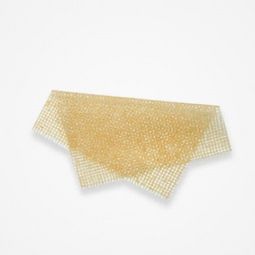It's a remedy that dates back to Pharaohs-one that doctors still use today to treat certain acute and chronic wounds, although in a different form than ancient Egyptian physicians knew.
It's called honey.
Assistant professor Simon Matoori of Université de Montréal's Faculty of Pharmacy, a pharmacist and researcher specializing in bioengineering, has taken an interest in honey and reviewed studies of its antiseptic, anti-inflammatory and pro-inflammatory properties. His results were recently published in the journal Advanced Therapeutics.
Matoori said his interest in the therapeutic virtues of the nectar from the bees was sparked by "the rise of antibiotic resistance, which is forcing us to find effective therapeutic alternatives."
A special kind of honey
The honey used in hospitals is not the same as the honey on grocery store shelves. Medical grade honey must meet stringent standards: it must come from certified organic sources, be free of contaminants and undergo gamma sterilization to eliminate potentially harmful micro-organisms, such as Clostridium botulinum spores.
One of the most common types of medicinal honey is mānuka honey from New Zealand or Australia. "Mānuka honey is produced by honeybees foraging on the mānuka tree-Leptospermum scoparium-and contains high concentrations of methylglyoxal, a compound with remarkable antimicrobial properties," Matoori explained.
According to the research that Matoori reviewed, honey can act on wounds in multiple ways: its natural acidity and high sugar concentration create a hostile environment for bacteria and, surprisingly, it can have either anti-inflammatory or pro-inflammatory effects, depending on the condition of the wound.
"It's fascinating to see how honey interacts with the wound microenvironment," Matoori said. "In a highly inflamed wound, it acts as an anti-inflammatory, while in a chronic wound that's not very active, it can stimulate a beneficial inflammatory response that promotes healing."
Promising but uncertain results
Currently, more than 20 honey-based products have been approved for medical use by the U.S. Food and Drug Administration. In Canada, some doctors are already using honey in their practice. Clinical studies show particularly encouraging results for the treatment of various types of wounds, including diabetic foot ulcers, leg ulcers, first and second-degree burns, bedsores, donor wounds, traumatic wounds and surgical wounds.
However, Matoori remains cautious.
"The results of the studies are sometimes contradictory, mainly because the research methods weren't standardized," he said. "We need more rigorous studies, with standard protocols for type of honey, dosage and patient population."
Identification of the active molecules in the honey, including methylglyoxal, has opened up new prospects. "If we understand precisely which components are responsible for the therapeutic effects, we'll be able to develop more effective standard dressings," Matoori suggested.
Further research could solve one of today's major challenges: the natural variability of honey, which complicates its use in medical settings. Researchers are now working to develop bio-inspired products that retain the beneficial properties of honey while ensuring stable, standardized composition for large-scale production.
As part of the broader fight against antibiotic resistance, Matoori plans to extend his research to veterinary applications, including livestock.
About this study
"Bee better: the role of honey in modern wound care," by Simon Matoori, Benjamin Freedman and Léo-Paul Tricou, was published Jan. 23, 2025 in Advanced Therapeutics.








